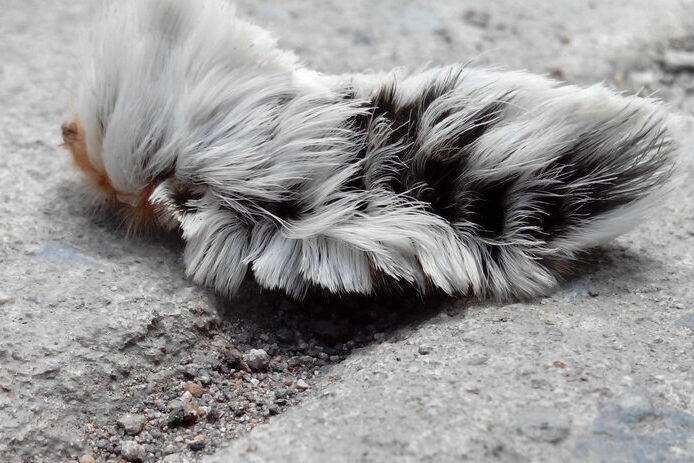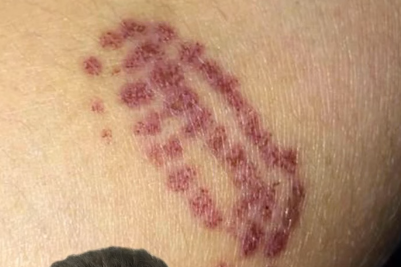1. The Fluffy Monster Hiding in Plain Sight

At first glance, it looks like a tiny, sentient toupee crawling across a tree branch. Soft, fuzzy, and about the size of a cotton ball, the puss caterpillar seems like something straight out of a children’s book. But don’t let its cuddly disguise fool you—this deceptively cute critter is packing venom strong enough to send a grown adult into unbearable agony. Hidden beneath its luxurious fur coat are venomous spines, each one as sharp as a hypodermic needle. The moment you brush against it, the spines break off into your skin, releasing one of the most excruciating toxins in the insect world.
Victims report an instant, searing pain that spreads like wildfire, often compared to a hot iron pressed against the flesh. Some even say it feels like their bones are cracking from the inside out. The worst part? The pain isn’t a quick sting—it can last for hours or even days, sometimes radiating through the entire limb. Some unlucky victims experience nausea, sweating, difficulty breathing, and even heart issues. And where do these little nightmares like to hang out? Backyards, schoolyards, and parks, especially in southern states like Florida and Texas. In other words, they’re everywhere.
2. A Venomous Legacy—Passed Down Through Evolution

If you think nature overdid it with the puss caterpillar’s defense system, you’re not alone. Evolution has shaped this tiny terror into a biological weapon, ensuring that anything foolish enough to touch it never makes that mistake twice.
Unlike bees, which lose their stingers after a single sting, the puss caterpillar’s venomous spines stay put. Each one is barbed, lodging into the skin like tiny poisoned harpoons. And the toxin? It’s hemolytic, meaning it destroys red blood cells and causes intense inflammation. Scientists believe it evolved this way to deter birds, lizards, and even humans from making a meal out of it. But here’s the kicker—no one is exactly sure how the venom works. Despite causing waves of suffering across the southeastern U.S., research on the puss caterpillar’s toxin is shockingly limited. What we do know is that it’s potent enough to put people in the hospital. Some unlucky victims even report feeling phantom pain weeks after the encounter, as if the caterpillar’s ghost still lingers beneath their skin.
3. From Fuzzy Terror to Winged Phantom

As terrifying as the puss caterpillar is, its adult form is almost forgettable. Once it finishes its reign of terror in the larval stage, it transforms into the Southern Flannel Moth—a small, harmless insect that looks like it belongs on a Hallmark greeting card.
Gone are the venomous spines, the potent toxin, the unrelenting pain. Instead, the moth flutters through the night, sipping nectar and minding its own business. It’s almost comical how such an unassuming creature emerges from one of nature’s most devious little landmines. But don’t be fooled—while the moth may seem like an afterthought, it ensures the next generation of tiny assassins will be ready to strike. Each female lays hundreds of eggs, ensuring that by the time next summer rolls around, fresh batches of venomous fuzzballs will be lurking in trees, waiting for their next victim.
4. The Unlucky Victims—and Their Nightmarish Stories

If you’ve ever wondered what true agony feels like, just ask someone who’s been stung by a puss caterpillar. One Texas woman described the pain as “worse than childbirth,” saying she could barely move as it radiated up her spine. A young boy in Florida had to be rushed to the ER because the sting caused his entire arm to swell to twice its normal size.
And then there’s the case of a Virginia woman who didn’t even see it coming. She was sitting under a tree, minding her business, when a caterpillar fell onto her arm. The moment it made contact, she felt a white-hot explosion of pain, followed by nausea and dizziness. Doctors had to remove the venomous spines one by one, a process she described as “absolute hell.” Some victims experience full-body rashes, chest tightness, and even temporary paralysis from the sheer shock of the sting. And the worst part? There’s no antidote. All you can do is wait it out—and try not to pass out from the pain.
5. The Puss Caterpillar’s Favorite Hideouts

You’d think something this dangerous would lurk in deep, remote forests. But no—the puss caterpillar prefers to hide exactly where you don’t want it to be. School playgrounds, backyard gardens, picnic tables—anywhere with trees or shrubs is prime real estate for these fuzzy nightmares.
They’re especially fond of oak, elm, and citrus trees, blending in perfectly with leaves and bark. Some even nestle into wooden benches or fences, lying in wait for an unsuspecting victim to lean against them. And here’s the real kicker: they don’t just sit on trees—they fall from them. More than a few people have been stung because a puss caterpillar dropped right onto their shoulder. Imagine casually sipping your morning coffee, only to feel a soft tickle… followed by blinding pain.
6. How to Survive an Encounter (Because You’ll Want to Know)

Let’s say you accidentally brush against one. What now? First things first—don’t touch it again. The venomous spines are now lodged in your skin, and any further contact will only drive them in deeper. The best thing to do? Grab a piece of tape and gently press it onto the sting site, then pull it off to remove the embedded spines. Some people swear by using wax strips, like you’re giving your arm an emergency Brazilian wax—but for survival purposes. Next, apply ice to slow the venom’s spread. Over-the-counter pain relievers can help, but if you start experiencing dizziness, swelling, or trouble breathing, get to a doctor immediately.
And the best way to avoid this tiny agent of chaos? Keep an eye on trees, especially in late summer and fall. If you see something that looks like a walking wig, steer clear—because no one wants to be part of the puss caterpillar pain club. Nature is full of deceptive creatures, but few are as sneaky and sadistic as the puss caterpillar. One moment, it’s a fuzzy little curiosity—the next, it’s sending waves of pain through your nervous system. It’s a reminder that sometimes, the most dangerous things aren’t the ones with fangs or claws. Sometimes, they’re small, silent, and covered in soft, deadly fluff.


